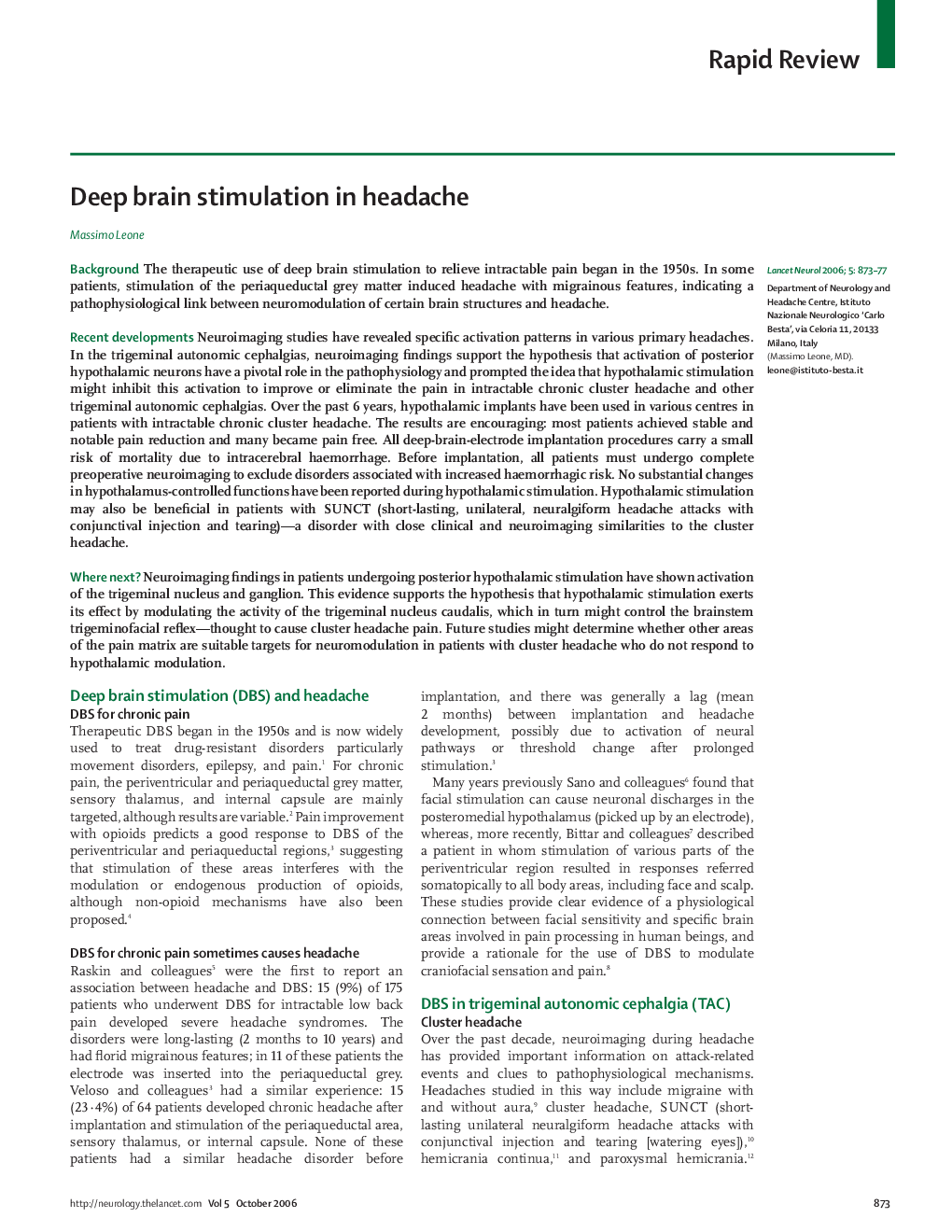| Article ID | Journal | Published Year | Pages | File Type |
|---|---|---|---|---|
| 3068161 | The Lancet Neurology | 2006 | 5 Pages |
SummaryBackgroundThe therapeutic use of deep brain stimulation to relieve intractable pain began in the 1950s. In some patients, stimulation of the periaqueductal grey matter induced headache with migrainous features, indicating a pathophysiological link between neuromodulation of certain brain structures and headache.Recent developmentsNeuroimaging studies have revealed specific activation patterns in various primary headaches. In the trigeminal autonomic cephalgias, neuroimaging findings support the hypothesis that activation of posterior hypothalamic neurons have a pivotal role in the pathophysiology and prompted the idea that hypothalamic stimulation might inhibit this activation to improve or eliminate the pain in intractable chronic cluster headache and other trigeminal autonomic cephalgias. Over the past 6 years, hypothalamic implants have been used in various centres in patients with intractable chronic cluster headache. The results are encouraging: most patients achieved stable and notable pain reduction and many became pain free. All deep-brain-electrode implantation procedures carry a small risk of mortality due to intracerebral haemorrhage. Before implantation, all patients must undergo complete preoperative neuroimaging to exclude disorders associated with increased haemorrhagic risk. No substantial changes in hypothalamus-controlled functions have been reported during hypothalamic stimulation. Hypothalamic stimulation may also be beneficial in patients with SUNCT (short-lasting, unilateral, neuralgiform headache attacks with conjunctival injection and tearing)—a disorder with close clinical and neuroimaging similarities to the cluster headache.Where next?Neuroimaging findings in patients undergoing posterior hypothalamic stimulation have shown activation of the trigeminal nucleus and ganglion. This evidence supports the hypothesis that hypothalamic stimulation exerts its effect by modulating the activity of the trigeminal nucleus caudalis, which in turn might control the brainstem trigeminofacial reflex—thought to cause cluster headache pain. Future studies might determine whether other areas of the pain matrix are suitable targets for neuromodulation in patients with cluster headache who do not respond to hypothalamic modulation.
